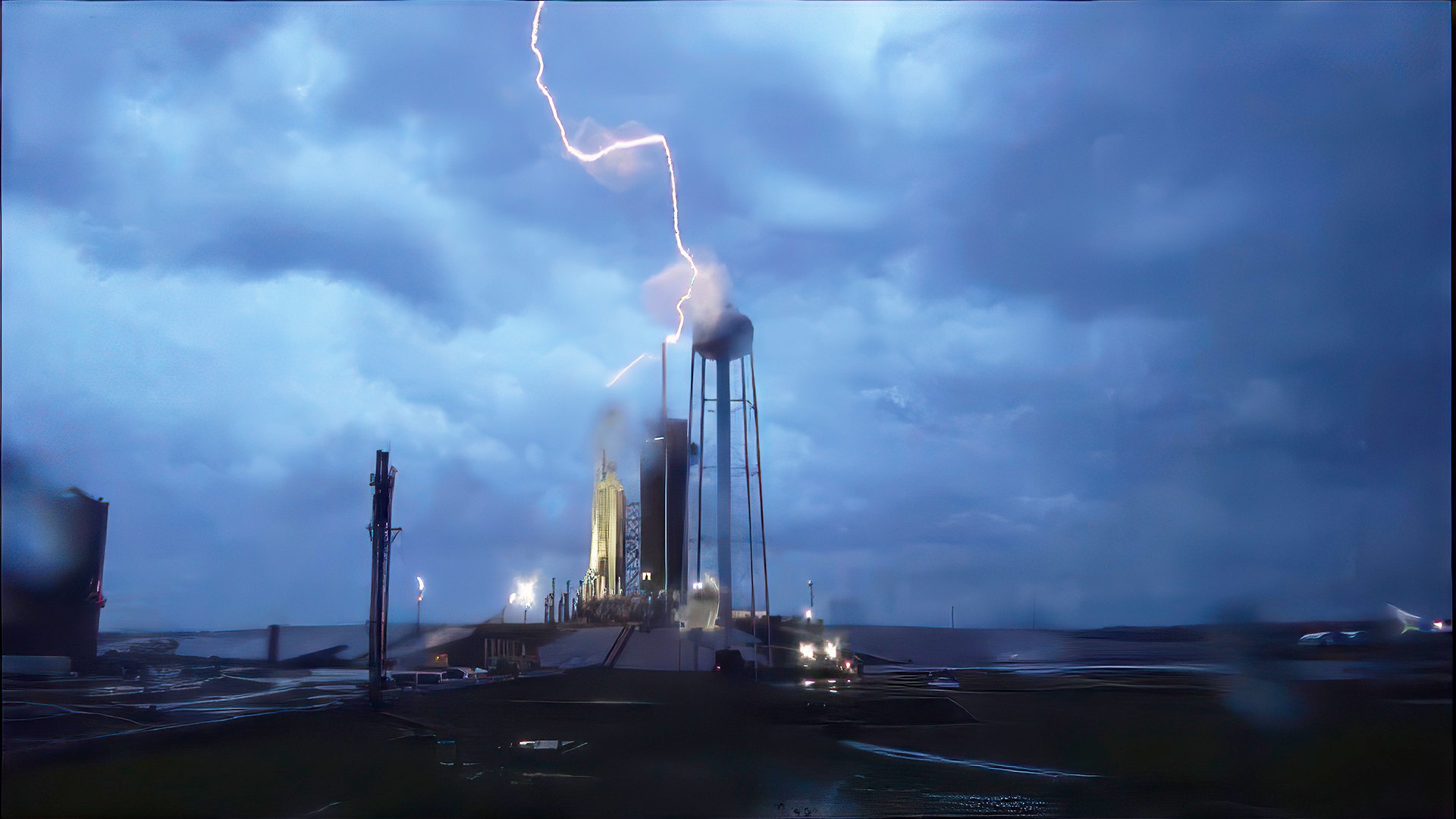See the moment lightning struck SpaceX's Falcon Heavy rocket launch pad (photo)

Stunning videos and images shared across social media captured the exact moment that lightning struck the launch pad as a SpaceX Falcon Heavy rocket sat awaiting liftoff on Thursday, April 27.
NASA's Kennedy Space Center in Florida experienced severe weather and was subjected to both lightning and tornado warnings that forced the Falcon Heavy launch attempt to be scrubbed. (It would go on to launch on April 30.)
Cameras located around the launchpad captured views of lightning hitting the protection mast atop the fixed tower based at Launch Complex 39A (LC-39A). The mast is designed to divert electrical charge away from the rocket on the launchpad and safely to the ground.
The following day after the storm that produced hail, tornadoes, and lightning, had abated SpaceX said via its Twitter account that engineer teams performed additional checkouts of Falcon Heavy, the payloads, and ground support equipment.
Related: SpaceX launches 3 satellites to orbit on 6th-ever Falcon Heavy mission
Last night's storm in Florida produced hail, tornadoes, and lightning. Following this strike on the tower at 39A, teams performed additional checkouts of Falcon Heavy, the payloads, and ground support equipment pic.twitter.com/GZwCARaZTxApril 28, 2023
These checks appeared to show that the lightning protection mast had functioned as intended, protecting the rocket and its payload from damage.
Spaceflight Now tweeted an incredible video of the launchpad strike that demonstrated the intimidating power of nature as the bolt of lightning illuminated the stormy Florida skies.
Breaking space news, the latest updates on rocket launches, skywatching events and more!
Here's a video of that lightning strike at the Falcon Heavy's launch pad. pic.twitter.com/YOe9a9AwQWApril 28, 2023
The launch, intended to send a ViaSat-3 Americas satellite into orbit was rescheduled for launch on Friday, April 28 at 7:29 p.m. EDT (2329 GMT), but was again scrubbed. The Falcon Heavy finally took flight carrying the 14,000-pound (6,400 kilograms) broadband satellite on Sunday, April 30 at 8:26 p.m. EDT (0026 GMT).
This was the sixth flight of a SpaceX Falcon Heavy rocket, which consists of three strapped-together Falcon 9 rocket first-stage units. This particular flight also carried a communications satellite called Arcturus that will be operated by San Francisco-based Astranis Space Technologies and an Internet-of-Things cubesat called GS-1 operated by Washington-based Gravity Space.
The Falcon Heavy had been SpaceX's most powerful rocket since it was first launched in 2018 carrying the red Tesla Roadster of founder and CEO Elon Musk to an orbit around the sun until this year.
Falcon Heavy's status was reduced by the launch of SpaceX's even more powerful Starship rocket on Thursday, April 20, 2023, at 9:33 a.m. EDT (1333 GMT). The 390 feet (120 meters) tall rocket's Raptor engines provide 16.6 million pounds of thrust on liftoff, dwarfing the not-inconsiderable liftoff thrust of 5 million pounds possessed by the Falcon Heavy.
The Starship launch ended when the rocket exploded four minutes after launch which SpaceX described as a "rapid unscheduled disassembly before stage separation."
Follow us on Twitter @Spacedotcom or on Facebook.

Robert Lea is a science journalist in the U.K. whose articles have been published in Physics World, New Scientist, Astronomy Magazine, All About Space, Newsweek and ZME Science. He also writes about science communication for Elsevier and the European Journal of Physics. Rob holds a bachelor of science degree in physics and astronomy from the U.K.’s Open University. Follow him on Twitter @sciencef1rst.
